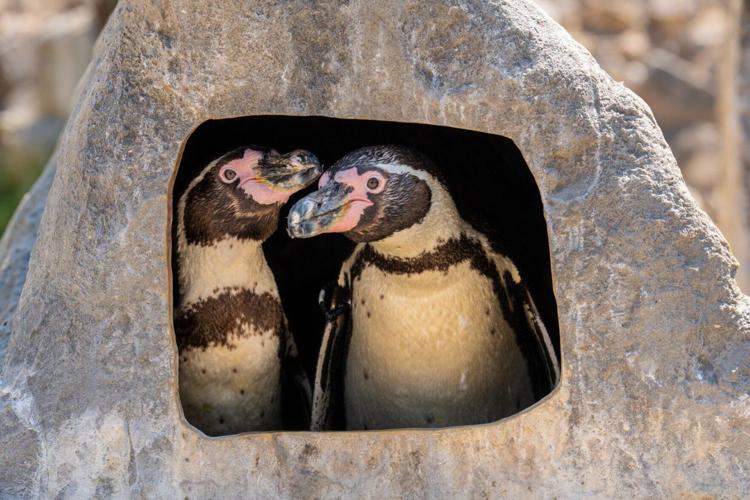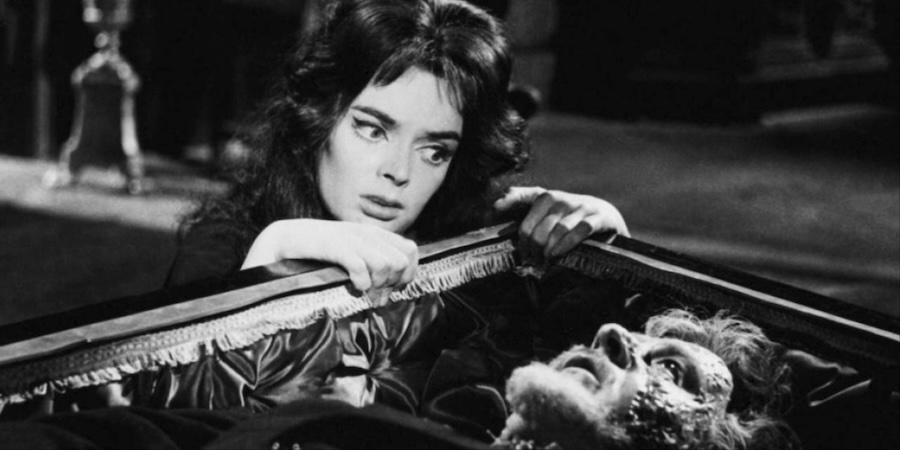Introduction: A Heartwarming Tale of Penguin Parenthood
In a remarkable display of nurturing and resilience, a same-sex penguin couple named Scampi and Flounder at Chester Zoo in Cheshire, England, have successfully hatched and raised a chick that was rejected by its biological parents. This heartwarming development, reported on July 3, 2025, highlights not only the adaptability of these endearing creatures but also the evolving understanding of animal behavior and social structures in the wild and in captivity. The story of Scampi and Flounder offers a unique lens through which to explore themes of caregiving, conservation, and the broader context of same-sex bonding in the animal kingdom.
This article delves into the details of this extraordinary event, providing a comprehensive exploration of the lives of Scampi and Flounder, the biological and behavioral significance of their actions, and the role of Chester Zoo in fostering such remarkable animal stories. Additionally, we will examine the historical and cultural significance of penguins in zoology and popular culture, the conservation efforts surrounding their species, and the broader implications of same-sex pairings in the animal world. By expanding on the original report, this narrative aims to offer readers a deeper appreciation for the complexities of animal behavior and the tireless work of zoos in promoting biodiversity and animal welfare.
The Story of Scampi and Flounder
Meet the Penguin Pair
Scampi and Flounder, two male Humboldt penguins, have become the stars of Chester Zoo, captivating visitors and zookeepers alike with their devoted partnership. Humboldt penguins (Spheniscus humboldti), native to the coastal regions of Peru and Chile, are known for their strong social bonds and monogamous tendencies. These medium-sized penguins, recognizable by their black and white plumage and distinctive pinkish patches around their faces, thrive in environments that mimic their natural coastal habitats. At Chester Zoo, Scampi and Flounder have been observed waddling side by side, preening each other, and sharing a nest, behaviors that signify a deep bond akin to that of opposite-sex penguin pairs.
Their relationship first garnered attention when zookeepers noticed their consistent companionship. Like many penguin couples, Scampi and Flounder engage in mutual preening, a behavior that strengthens pair bonds, and they often vocalize to each other with distinctive braying calls. These behaviors are not merely affectionate but serve critical social functions, reinforcing trust and cooperation necessary for survival in the wild or, in this case, successful parenting in captivity.
The Rejected Chick and a New Opportunity
In early 2025, a Humboldt penguin chick at Chester Zoo was rejected by its biological parents, a not-uncommon occurrence in penguin colonies where stress, inexperience, or environmental factors can disrupt parental care. Recognizing the chick’s vulnerability, zookeepers decided to intervene, but rather than hand-rearing the chick—a process that can reduce its chances of integrating into the colony—they offered the egg to Scampi and Flounder, who had previously shown parenting instincts by attempting to incubate stones in their nest.
The decision proved to be a success. Scampi and Flounder took to their new role with remarkable dedication, taking turns incubating the egg and, once it hatched, feeding and protecting the chick. This act of surrogacy mirrors natural behaviors observed in penguin colonies, where individuals sometimes adopt orphaned or abandoned chicks. The chick, now thriving under the care of its adoptive parents, has become a symbol of hope and resilience, demonstrating that love and care transcend biological ties even in the animal kingdom.
Zookeepers’ Observations and Insights
Zookeepers at Chester Zoo have described Scampi and Flounder’s parenting as a “heartwarming development,” noting their seamless coordination in nurturing the chick. According to staff, the penguins alternate duties, with one guarding the nest while the other forages for food, a behavior typical of penguin parenting pairs. This teamwork ensures the chick receives constant care and protection, critical for its survival in the early weeks of life.
“Scampi and Flounder have shown incredible dedication to their chick,” said a Chester Zoo spokesperson. “Their bond as a couple and their commitment to raising this chick highlight the strength and adaptability of penguins, whether in the wild or in our care.”
The zoo’s careful monitoring has ensured the chick’s health, with regular check-ups confirming that it is growing at a healthy rate. The success of this surrogacy has also provided valuable data for researchers studying penguin behavior, particularly in the context of same-sex pairings and their contributions to colony dynamics.
The Science of Same-Sex Bonding in Penguins
Behavioral Patterns in the Animal Kingdom
The story of Scampi and Flounder is not an isolated incident but part of a broader pattern of same-sex bonding observed across various animal species, including penguins. Studies have documented same-sex pairings in over 1,500 species, from mammals like dolphins and bonobos to birds such as albatrosses and, notably, penguins. In penguins, same-sex pairs have been observed in species like Humboldt, Gentoo, and King penguins, both in the wild and in captivity.
These pairings often serve similar social and survival functions as opposite-sex pairings. For instance, same-sex penguin couples engage in nest-building, mutual preening, and vocal communication, behaviors that strengthen social bonds within the colony. In some cases, these pairs adopt chicks or eggs, contributing to the survival of the colony by ensuring that vulnerable offspring are cared for. This adaptability is particularly crucial in environments where chick mortality rates can be high due to predation, competition, or environmental stressors.
Notable Precedents: Other Famous Penguin Couples
Scampi and Flounder join a lineage of celebrated same-sex penguin couples that have captured global attention. One of the most famous examples is Roy and Silo, two male Chinstrap penguins at New York’s Central Park Zoo, who formed a bond in the late 1990s and successfully raised a chick named Tango. Their story, documented in the children’s book *And Tango Makes Three*, became a cultural touchstone, sparking discussions about family structures and acceptance.
Similarly, in 2018, Sphen and Magic, two male Gentoo penguins at Sydney’s Sea Life Aquarium, gained international fame for their devoted partnership and successful parenting of two chicks. These stories highlight the natural occurrence of same-sex behavior in penguins and challenge anthropocentric views of family and caregiving, offering valuable lessons about diversity in nature.
Why Do Same-Sex Pairings Occur?
Biologists have proposed several theories to explain same-sex pairings in animals. One hypothesis suggests that such pairings enhance social cohesion within groups, fostering cooperation and reducing conflict. In penguins, where colony living is essential for survival, strong pair bonds—whether same-sex or opposite-sex—contribute to the stability of the group. Another theory posits that same-sex pairings may serve as a form of practice for parenting, preparing individuals for future reproductive opportunities. In the case of Scampi and Flounder, their adoption of a rejected chick demonstrates how such pairings can directly contribute to the survival of the next generation.
Environmental factors may also play a role. In captivity, where mate choice may be limited, penguins may form bonds with individuals of the same sex due to proximity or compatibility. However, the presence of same-sex pairings in wild populations suggests that these behaviors are not merely a product of captivity but a natural variation in animal behavior.
Chester Zoo: A Hub of Conservation and Education
A Legacy of Animal Welfare
Chester Zoo, located in Cheshire, England, is one of the UK’s largest and most respected zoological institutions, housing over 35,000 animals across 500 species. Founded in 1931 by George Mottershead, the zoo has a long history of pioneering conservation efforts and promoting animal welfare. Its mission is to prevent extinction through breeding programs, research, and education, making it a fitting home for Scampi and Flounder’s inspiring story.
The zoo’s Humboldt penguin exhibit, where Scampi and Flounder reside, is designed to replicate the species’ natural coastal environment, complete with rocky nesting sites and a large pool for swimming. This carefully crafted habitat supports the penguins’ physical and psychological well-being, allowing them to exhibit natural behaviors like pair-bonding and parenting. The success of Scampi and Flounder’s chick-rearing is a testament to the zoo’s commitment to creating environments where animals can thrive.
Conservation Challenges for Humboldt Penguins
Humboldt penguins, classified as Vulnerable by the International Union for Conservation of Nature (IUCN), face significant threats in the wild, including overfishing, climate change, and habitat degradation. Their reliance on nutrient-rich coastal waters makes them particularly susceptible to fluctuations in fish populations caused by phenomena like El Niño. Chester Zoo participates in international breeding programs to maintain genetically diverse populations of Humboldt penguins, ensuring the species’ survival in the face of these challenges.
By showcasing stories like that of Scampi and Flounder, Chester Zoo also educates the public about the importance of conservation and the complexities of animal behavior. Visitors to the zoo can observe the penguins’ daily routines, learning about their social structures and the threats they face in the wild. These educational efforts foster a deeper appreciation for biodiversity and encourage support for conservation initiatives.
Penguins in Cultural and Historical Context
Penguins as Cultural Icons
Penguins have long captured the human imagination, appearing in literature, film, and popular culture as symbols of resilience, community, and charm. From the animated antics of *Happy Feet* to the documentary *March of the Penguins*, these birds have become ambassadors for the natural world, drawing attention to the beauty and fragility of their habitats. The story of Scampi and Flounder adds a new chapter to this cultural narrative, highlighting the diversity of penguin family structures and challenging traditional notions of parenthood.
In literature, penguins have been used to explore themes of individuality and belonging. For example, the aforementioned *And Tango Makes Three* uses the story of Roy and Silo to teach children about acceptance and the many forms of family. Similarly, Scampi and Flounder’s story has the potential to inspire conversations about love, care, and inclusivity, resonating with audiences of all ages.
Historical Significance of Zoos in Penguin Conservation
Zoos have played a pivotal role in the conservation of penguins since the early 20th century, when species like the Humboldt penguin began facing significant threats. Early zoos often struggled to replicate the cold, nutrient-rich environments required by penguins, but advancements in zoological science have enabled institutions like Chester Zoo to create thriving habitats. These efforts have not only supported captive populations but also contributed to research and reintroduction programs aimed at bolstering wild populations.
The historical context of penguin conservation underscores the importance of stories like Scampi and Flounder’s. By demonstrating the adaptability and resilience of these animals, zoos can inspire public support for conservation efforts and highlight the interconnectedness of all species in maintaining healthy ecosystems.
Broader Implications: Lessons from Scampi and Flounder
Challenging Stereotypes in Animal Behavior
The story of Scampi and Flounder challenges anthropocentric assumptions about family and caregiving, illustrating that nurturing behaviors are not confined to traditional male-female pairings. Their success as parents underscores the importance of focusing on the quality of care rather than the structure of the family unit. This perspective has implications not only for zoology but also for human society, where debates about family structures continue to evolve.
By sharing this story, Chester Zoo contributes to a broader dialogue about diversity and acceptance, using the natural world as a lens to explore these themes. The universal appeal of penguins, combined with the emotional resonance of Scampi and Flounder’s journey, makes their story a powerful tool for education and advocacy.
The Role of Zoos in Shaping Public Perception
Zoos like Chester Zoo serve as bridges between humans and the natural world, offering opportunities to observe and learn about species that many would never encounter otherwise. The story of Scampi and Flounder has the potential to engage a wide audience, from families visiting the zoo to researchers studying animal behavior. By highlighting the individuality and complexity of animals, zoos can foster empathy and encourage actions that support conservation and sustainability.
Conclusion: A Legacy of Love and Resilience
The tale of Scampi and Flounder is more than a heartwarming anecdote; it is a testament to the adaptability, resilience, and compassion of animals. Their successful parenting of a rejected chick at Chester Zoo underscores the strength of their bond and the importance of conservation efforts in supporting vulnerable species like the Humboldt penguin. By exploring the scientific, cultural, and historical dimensions of this story, we gain a deeper appreciation for the complexities of animal behavior and the vital role of zoos in preserving biodiversity.
As Scampi and Flounder continue to care for their chick, their story serves as a reminder of the power of love and cooperation in overcoming challenges. Whether in the rocky coastal habitats of Peru or the carefully curated enclosures of Chester Zoo, penguins continue to teach us about the beauty of diversity and the strength of community. Their legacy, like that of Roy and Silo or Sphen and Magic, will inspire future generations to celebrate and protect the natural world.



















0 Comments